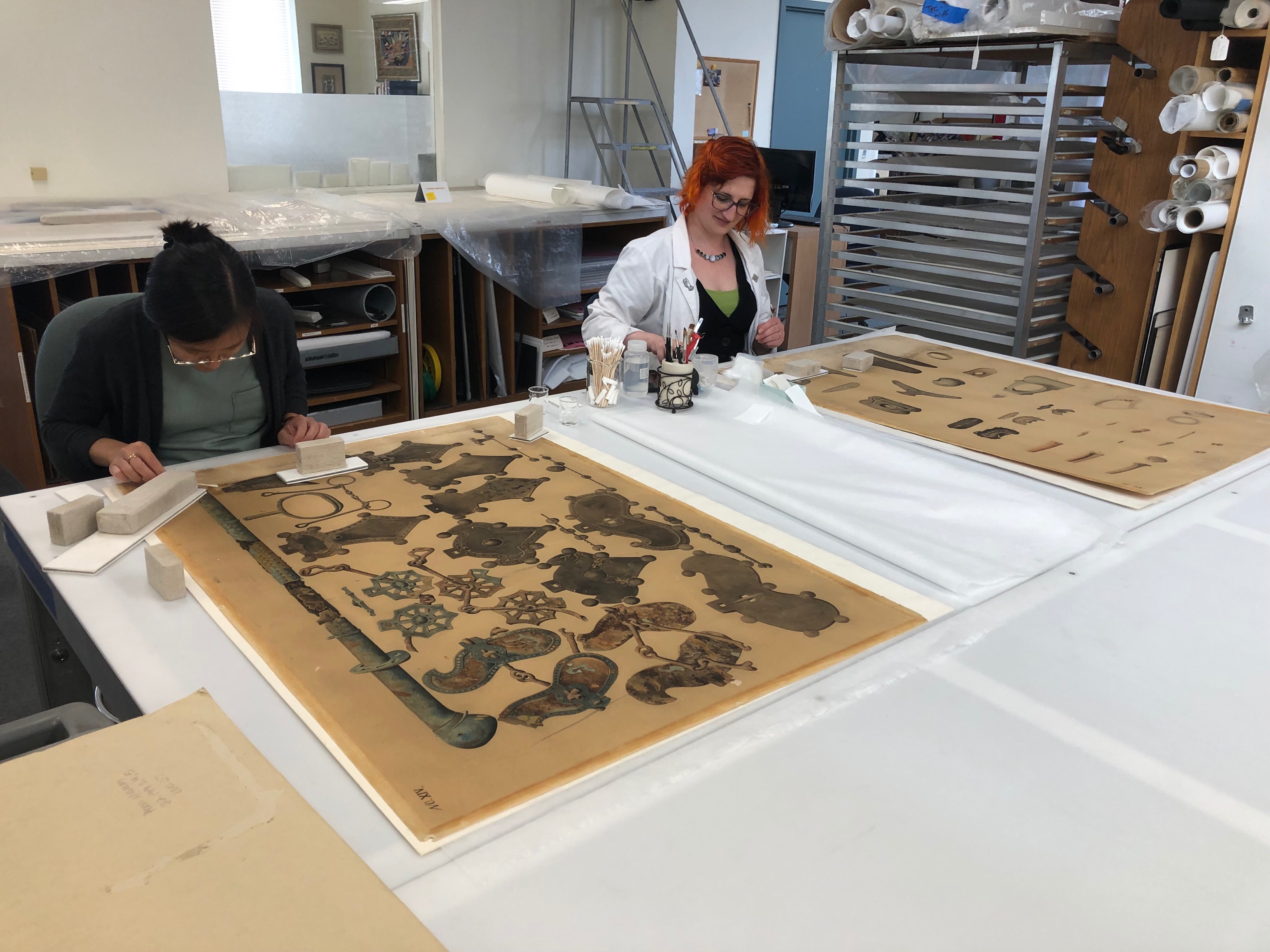
CCAHA Treats Penn Museum Watercolors from 1893 Chicago World's Fair
In the time since London’s “Great Exposition” of 1851, more than 100 cities have officially hosted the World’s Fair, a series of international events designed to highlight the unique accomplishments of various nations. The number, popularity, and scale of World’s Fair expositions grew alongside the cultural and technological advances of the 19th and 20th centuries.
The Chicago World's Fair of 1893, held in the city’s Jackson Park, was also known as the “The World's Columbian Exposition,” as it marked the 400th anniversary of Christopher Columbus's arrival in the New World in 1492. That year, Japan enjoyed the largest total floor space of any country, including both the Japanese pavilion and a large display in the Hall of Fine Arts. Among the items representing Japan was an assortment of very large, beautifully detailed watercolor paintings.

In a multi-year project, CCAHA is working with the Penn Museum to treat its collection of sixteen watercolors produced for the 1893 World's Fair. The treatment was made possible by a grant from the Sumitomo Foundation in Tokyo, which provides funding for Japan-related research and cultural heritage projects.
“A World's Fair typically had a theme, showcasing the latest and greatest and most exciting inventions,” said CCAHA Senior Paper Conservator Heather Hendry. “But there was also a real theme of nationalism and heritage for different countries, both in the New World and in the Old World.”
Heather noted that the Japanese pavilion of the 1893 World's Fair included displays of many of the nation's major archaeological artifacts, intended to demonstrate Japan’s long history and present a cohesive identity.

“The watercolors were made because some of the artifacts were deemed too important to travel outside of the country, and so the most beautiful and the most precious ones were replicated in watercolor to display instead of shipping the original objects.”
According to Penn Museum Senior Archivist Alessandro Pezzati, the paintings were acquired by Stewart Culin, Director of the Museum at the time of the 1893 Chicago World’s Fair. Culin, who was also Curator of the Museum’s Asian and General Ethnology sections, purchased them directly from the Japanese pavilion.
“The paintings were framed until 1979, when they were damaged by a leak in storage,” Alessandro said. “Though they were unframed and interleaved after the leak, they are finally being professionally treated.”

Heather worked on the treatment along with CCAHA Associate Paper Conservator Joanna Hurd and Conservation Technician Binh-An Nguyen. The project provided the perfect opportunity for Binh-An to get experience with a variety of techniques before starting graduate work this fall at the Winterthur/University of Delaware Program in Art Conservation (WUDPAC).
Washing was not possible due to the continuing solubility of the watercolors. Even so, they were able to greatly reduce the visibility of tidelines, as well as remove a great deal of grime, mend tears, splits, and punctures and reinforce weakened areas. Each painting has been humidified and flattened and will eventually be housed in a new protective enclosure.
“The goal of the treatment,” Joanna said, “is to make them safe to handle for researchers and archivists so they can safely get them in and out of housing and be displayed in the future.”
Photos, from top: CCAHA Conservation Technician Binh-An Nguyen works on one of the Penn Museum's 1893 Japanese watercolors; CCAHA Associate Paper Conservator Joanna Hurd treats a watercolor from the same collection; a close-up of some of the Binh-An's conservation tools; Binh-An (left) and Joanna (right) working side-by-side.